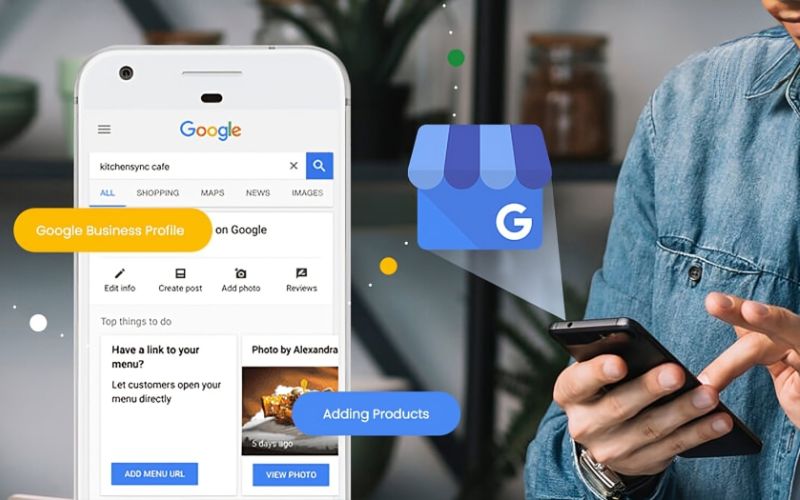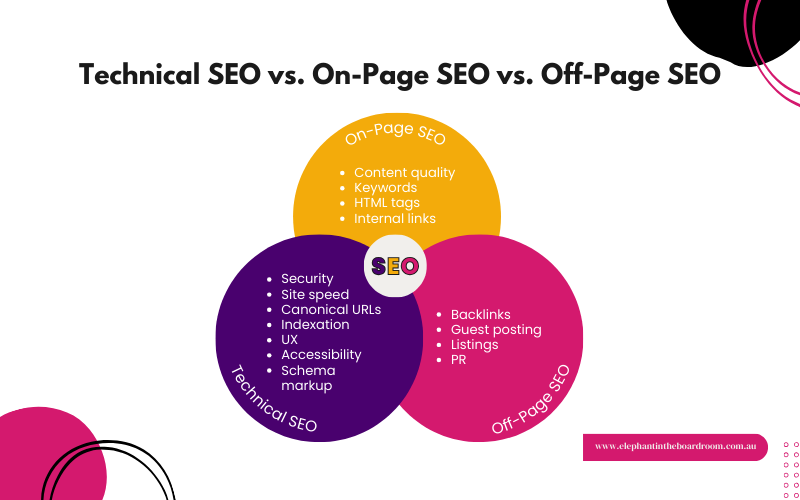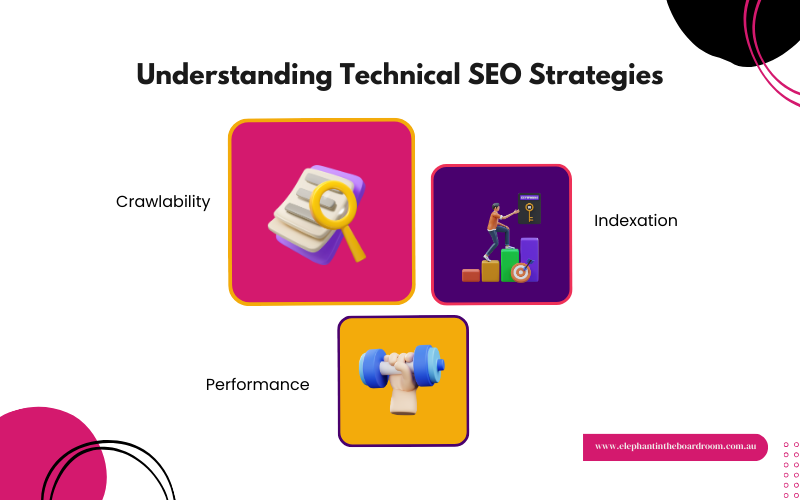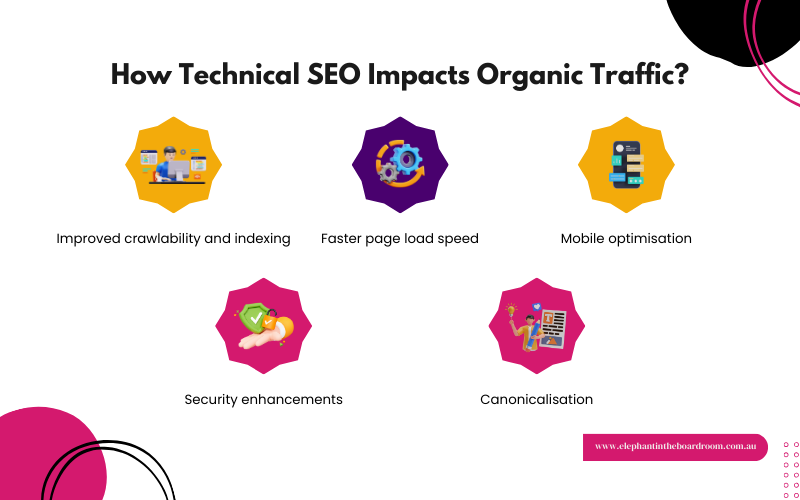
Running a business without an online presence is like hosting a grand event in the middle of nowhere, no matter how incredible the setup, no one knows where to find you. Today, customers typically turn to Google when looking for services, and if your business isn’t showing up in their search, you are missing out. To make sure you are not lost in the crowd, you need a digital presence that’s visible and trustworthy. That’s where a Google Business Profile for Business comes in, allowing you to show up when it matters most.
If you are wondering how to make the most of it, you are in the right place. In this blog, we will walk you through the importance of setting up and optimising your profile. Let’s dive in and see how this simple yet effective tool can bring big benefits to your business.
What’s Inside:
- What is Google Business Profile?
- Google Business Profile for Business: Why Is it Important?
- A Step-by-Step Guide to Set Up Your Google Business Profile for Business
- Google Business Profile for Business: Boost Your Business with Us
What is Google Business Profile?
Google Business Profile is a free, powerful tool designed to help businesses manage their online visibility across Google Search and Google Maps. Think of it as your business’s digital storefront, where customers can easily discover essential details such as your location, opening hours, contact information, website, and even photos of your business.
Google Business Profile for Business: Why is it Important?

A Google Business Profile is a powerful tool that helps your business stand out online. Here's why it matters for your business:
Boosts Local Visibility
When customers search for businesses near them, a well-optimised GMB profile ensures your business shows up on Google Maps and in local search results. This gives you an edge over competitors who may not be leveraging this free tool.
Enhances Customer Engagement
Your GMB profile allows customers to interact directly with your business. They can ask questions, make bookings, leave reviews, or even request directions to your location. Engaging with these actions builds trust and encourages more customer interaction.
Improves SEO Ranking
Google uses the information from your Google Business Profile to help rank your business in local searches. The more complete and accurate your profile is, the more likely you are to appear higher in local search results.
Provides Insights on Customer Behaviour
Through the Google Business Profile dashboard, you can see how customers find your business, what actions they take, and even where they are coming from. This valuable data helps you adjust your marketing strategies and better serve your audience.
Free Marketing Tool
Setting up and maintaining a Google My Business profile is free, which makes it an accessible and effective marketing tool for businesses of all sizes. You can share updates, and promotions, and even respond to customer reviews, all without paying a cent.
Helps Build Trust with Reviews
Customer reviews on your GMB profile can significantly influence potential customers. Positive reviews boost your credibility while responding to reviews shows you care about customer feedback, enhancing your reputation and fostering loyalty.
Mobile-Friendly
Given that more people search for businesses on their mobile devices than ever before, a well-maintained GMB profile ensures that your business is front and centre, with easy-to-find contact details, location, and relevant information for mobile users.
A Step-by-Step Guide to Set Up Your Google Business Profile for Business
Ready to leverage the power of Google Business Profile for business? These simple steps will open the door to greater engagement and enhanced local search results.
Here are the steps on how to set up your Google Business Profile for Business:
Step 1: Create or Log into Your Google Account
Before you can get started, you will need a Google account. If you already have one, simply log in. If not, take a moment to create a new Google account. This will be the foundation of your Google My Business profile.
Step 2: Access Google Business Profile
Once logged into your Google account, go to Google Business Profile. Click “Manage Now” to begin setting up your profile.
Step 3: Add Your Business Information
In this step, you must input all the key details about your business. This includes your business name, what your business does, and any relevant services or products you offer. Be specific with your business category to help Google list you correctly for local searches.
Step 4: Specify Your Location
If you have a physical storefront or office where customers can visit, make sure to specify your business location. You will be asked to pin your location on Google Maps to make it easy for potential customers to find you. If your business is service-based and you don't have a physical store, you can list the areas you serve instead.
Step 5: Provide Contact Information
Next, you will enter your contact details, including your phone number and website URL. Make sure this information is correct and up-to-date so customers can easily reach out to you or learn more about your business.
Step 6: Verify Your Business
To ensure that your business is legitimate and owned by you, Google will require you to verify your profile. The most common method is by mail, Google will send a postcard with a verification code to the business address you have provided. Once you receive the postcard, follow the instructions to complete the verification process. This may take up to 2 weeks.
Step 7: Optimise Your Listing
Once your business profile is verified, it is time to optimise it for maximum impact. Add high-quality photos of your business, products, or services. Write a compelling business description and include keywords that potential customers might use to find you. Keep your business hours accurate, and respond to reviews and customer queries to build trust.
Google Business Profile for Business: Boost Your Business with Our Expertise
Why struggle with the complexities of online marketing when you can have a team of professionals handling it for you? We offer comprehensive management services that go beyond Google Business Profile for business. From SEO to social media, we are here to help you thrive in the digital world.
Don't let your business get left behind. Reach out to us today and take the first step toward building a thriving future for your brand. Together, we will turn your goals into achievements and your business into a standout success story.

Running a business without an online presence is like hosting a grand event in the middle of nowhere, no matter how incredible the setup, no one knows where to find you. Today, customers typically turn to Google when looking for services, and if your business isn’t showing up in their search, you are missing out. To make sure you are not lost in the crowd, you need a digital presence that’s visible and trustworthy. That’s where a Google Business Profile for Business comes in, allowing you to show up when it matters most.
If you are wondering how to make the most of it, you are in the right place. In this blog, we will walk you through the importance of setting up and optimising your profile. Let’s dive in and see how this simple yet effective tool can bring big benefits to your business.
What’s Inside:
- What is Google Business Profile?
- Google Business Profile for Business: Why Is it Important?
- A Step-by-Step Guide to Set Up Your Google Business Profile for Business
- Google Business Profile for Business: Boost Your Business with Us
What is Google Business Profile?
Google Business Profile is a free, powerful tool designed to help businesses manage their online visibility across Google Search and Google Maps. Think of it as your business’s digital storefront, where customers can easily discover essential details such as your location, opening hours, contact information, website, and even photos of your business.
Google Business Profile for Business: Why is it Important?

A Google Business Profile is a powerful tool that helps your business stand out online. Here's why it matters for your business:
Boosts Local Visibility
When customers search for businesses near them, a well-optimised GMB profile ensures your business shows up on Google Maps and in local search results. This gives you an edge over competitors who may not be leveraging this free tool.
Enhances Customer Engagement
Your GMB profile allows customers to interact directly with your business. They can ask questions, make bookings, leave reviews, or even request directions to your location. Engaging with these actions builds trust and encourages more customer interaction.
Improves SEO Ranking
Google uses the information from your Google Business Profile to help rank your business in local searches. The more complete and accurate your profile is, the more likely you are to appear higher in local search results.
Provides Insights on Customer Behaviour
Through the Google Business Profile dashboard, you can see how customers find your business, what actions they take, and even where they are coming from. This valuable data helps you adjust your marketing strategies and better serve your audience.
Free Marketing Tool
Setting up and maintaining a Google My Business profile is free, which makes it an accessible and effective marketing tool for businesses of all sizes. You can share updates, and promotions, and even respond to customer reviews, all without paying a cent.
Helps Build Trust with Reviews
Customer reviews on your GMB profile can significantly influence potential customers. Positive reviews boost your credibility while responding to reviews shows you care about customer feedback, enhancing your reputation and fostering loyalty.
Mobile-Friendly
Given that more people search for businesses on their mobile devices than ever before, a well-maintained GMB profile ensures that your business is front and centre, with easy-to-find contact details, location, and relevant information for mobile users.
A Step-by-Step Guide to Set Up Your Google Business Profile for Business
Ready to leverage the power of Google Business Profile for business? These simple steps will open the door to greater engagement and enhanced local search results.
Here are the steps on how to set up your Google Business Profile for Business:
Step 1: Create or Log into Your Google Account
Before you can get started, you will need a Google account. If you already have one, simply log in. If not, take a moment to create a new Google account. This will be the foundation of your Google My Business profile.
Step 2: Access Google Business Profile
Once logged into your Google account, go to Google Business Profile. Click “Manage Now” to begin setting up your profile.
Step 3: Add Your Business Information
In this step, you must input all the key details about your business. This includes your business name, what your business does, and any relevant services or products you offer. Be specific with your business category to help Google list you correctly for local searches.
Step 4: Specify Your Location
If you have a physical storefront or office where customers can visit, make sure to specify your business location. You will be asked to pin your location on Google Maps to make it easy for potential customers to find you. If your business is service-based and you don't have a physical store, you can list the areas you serve instead.
Step 5: Provide Contact Information
Next, you will enter your contact details, including your phone number and website URL. Make sure this information is correct and up-to-date so customers can easily reach out to you or learn more about your business.
Step 6: Verify Your Business
To ensure that your business is legitimate and owned by you, Google will require you to verify your profile. The most common method is by mail, Google will send a postcard with a verification code to the business address you have provided. Once you receive the postcard, follow the instructions to complete the verification process. This may take up to 2 weeks.
Step 7: Optimise Your Listing
Once your business profile is verified, it is time to optimise it for maximum impact. Add high-quality photos of your business, products, or services. Write a compelling business description and include keywords that potential customers might use to find you. Keep your business hours accurate, and respond to reviews and customer queries to build trust.
Google Business Profile for Business: Boost Your Business with Our Expertise
Why struggle with the complexities of online marketing when you can have a team of professionals handling it for you? We offer comprehensive management services that go beyond Google Business Profile for business. From SEO to social media, we are here to help you thrive in the digital world.
Don't let your business get left behind. Reach out to us today and take the first step toward building a thriving future for your brand. Together, we will turn your goals into achievements and your business into a standout success story.

Running a business without an online presence is like hosting a grand event in the middle of nowhere, no matter how incredible the setup, no one knows where to find you. Today, customers typically turn to Google when looking for services, and if your business isn’t showing up in their search, you are missing out. To make sure you are not lost in the crowd, you need a digital presence that’s visible and trustworthy. That’s where a Google Business Profile for Business comes in, allowing you to show up when it matters most.
If you are wondering how to make the most of it, you are in the right place. In this blog, we will walk you through the importance of setting up and optimising your profile. Let’s dive in and see how this simple yet effective tool can bring big benefits to your business.
What’s Inside:
- What is Google Business Profile?
- Google Business Profile for Business: Why Is it Important?
- A Step-by-Step Guide to Set Up Your Google Business Profile for Business
- Google Business Profile for Business: Boost Your Business with Us
What is Google Business Profile?
Google Business Profile is a free, powerful tool designed to help businesses manage their online visibility across Google Search and Google Maps. Think of it as your business’s digital storefront, where customers can easily discover essential details such as your location, opening hours, contact information, website, and even photos of your business.
Google Business Profile for Business: Why is it Important?

A Google Business Profile is a powerful tool that helps your business stand out online. Here's why it matters for your business:
Boosts Local Visibility
When customers search for businesses near them, a well-optimised GMB profile ensures your business shows up on Google Maps and in local search results. This gives you an edge over competitors who may not be leveraging this free tool.
Enhances Customer Engagement
Your GMB profile allows customers to interact directly with your business. They can ask questions, make bookings, leave reviews, or even request directions to your location. Engaging with these actions builds trust and encourages more customer interaction.
Improves SEO Ranking
Google uses the information from your Google Business Profile to help rank your business in local searches. The more complete and accurate your profile is, the more likely you are to appear higher in local search results.
Provides Insights on Customer Behaviour
Through the Google Business Profile dashboard, you can see how customers find your business, what actions they take, and even where they are coming from. This valuable data helps you adjust your marketing strategies and better serve your audience.
Free Marketing Tool
Setting up and maintaining a Google My Business profile is free, which makes it an accessible and effective marketing tool for businesses of all sizes. You can share updates, and promotions, and even respond to customer reviews, all without paying a cent.
Helps Build Trust with Reviews
Customer reviews on your GMB profile can significantly influence potential customers. Positive reviews boost your credibility while responding to reviews shows you care about customer feedback, enhancing your reputation and fostering loyalty.
Mobile-Friendly
Given that more people search for businesses on their mobile devices than ever before, a well-maintained GMB profile ensures that your business is front and centre, with easy-to-find contact details, location, and relevant information for mobile users.
A Step-by-Step Guide to Set Up Your Google Business Profile for Business
Ready to leverage the power of Google Business Profile for business? These simple steps will open the door to greater engagement and enhanced local search results.
Here are the steps on how to set up your Google Business Profile for Business:
Step 1: Create or Log into Your Google Account
Before you can get started, you will need a Google account. If you already have one, simply log in. If not, take a moment to create a new Google account. This will be the foundation of your Google My Business profile.
Step 2: Access Google Business Profile
Once logged into your Google account, go to Google Business Profile. Click “Manage Now” to begin setting up your profile.
Step 3: Add Your Business Information
In this step, you must input all the key details about your business. This includes your business name, what your business does, and any relevant services or products you offer. Be specific with your business category to help Google list you correctly for local searches.
Step 4: Specify Your Location
If you have a physical storefront or office where customers can visit, make sure to specify your business location. You will be asked to pin your location on Google Maps to make it easy for potential customers to find you. If your business is service-based and you don't have a physical store, you can list the areas you serve instead.
Step 5: Provide Contact Information
Next, you will enter your contact details, including your phone number and website URL. Make sure this information is correct and up-to-date so customers can easily reach out to you or learn more about your business.
Step 6: Verify Your Business
To ensure that your business is legitimate and owned by you, Google will require you to verify your profile. The most common method is by mail, Google will send a postcard with a verification code to the business address you have provided. Once you receive the postcard, follow the instructions to complete the verification process. This may take up to 2 weeks.
Step 7: Optimise Your Listing
Once your business profile is verified, it is time to optimise it for maximum impact. Add high-quality photos of your business, products, or services. Write a compelling business description and include keywords that potential customers might use to find you. Keep your business hours accurate, and respond to reviews and customer queries to build trust.
Google Business Profile for Business: Boost Your Business with Our Expertise
Why struggle with the complexities of online marketing when you can have a team of professionals handling it for you? We offer comprehensive management services that go beyond Google Business Profile for business. From SEO to social media, we are here to help you thrive in the digital world.
Don't let your business get left behind. Reach out to us today and take the first step toward building a thriving future for your brand. Together, we will turn your goals into achievements and your business into a standout success story.

Running a business without an online presence is like hosting a grand event in the middle of nowhere, no matter how incredible the setup, no one knows where to find you. Today, customers typically turn to Google when looking for services, and if your business isn’t showing up in their search, you are missing out. To make sure you are not lost in the crowd, you need a digital presence that’s visible and trustworthy. That’s where a Google Business Profile for Business comes in, allowing you to show up when it matters most.
If you are wondering how to make the most of it, you are in the right place. In this blog, we will walk you through the importance of setting up and optimising your profile. Let’s dive in and see how this simple yet effective tool can bring big benefits to your business.
What’s Inside:
- What is Google Business Profile?
- Google Business Profile for Business: Why Is it Important?
- A Step-by-Step Guide to Set Up Your Google Business Profile for Business
- Google Business Profile for Business: Boost Your Business with Us
What is Google Business Profile?
Google Business Profile is a free, powerful tool designed to help businesses manage their online visibility across Google Search and Google Maps. Think of it as your business’s digital storefront, where customers can easily discover essential details such as your location, opening hours, contact information, website, and even photos of your business.
Google Business Profile for Business: Why is it Important?

A Google Business Profile is a powerful tool that helps your business stand out online. Here's why it matters for your business:
Boosts Local Visibility
When customers search for businesses near them, a well-optimised GMB profile ensures your business shows up on Google Maps and in local search results. This gives you an edge over competitors who may not be leveraging this free tool.
Enhances Customer Engagement
Your GMB profile allows customers to interact directly with your business. They can ask questions, make bookings, leave reviews, or even request directions to your location. Engaging with these actions builds trust and encourages more customer interaction.
Improves SEO Ranking
Google uses the information from your Google Business Profile to help rank your business in local searches. The more complete and accurate your profile is, the more likely you are to appear higher in local search results.
Provides Insights on Customer Behaviour
Through the Google Business Profile dashboard, you can see how customers find your business, what actions they take, and even where they are coming from. This valuable data helps you adjust your marketing strategies and better serve your audience.
Free Marketing Tool
Setting up and maintaining a Google My Business profile is free, which makes it an accessible and effective marketing tool for businesses of all sizes. You can share updates, and promotions, and even respond to customer reviews, all without paying a cent.
Helps Build Trust with Reviews
Customer reviews on your GMB profile can significantly influence potential customers. Positive reviews boost your credibility while responding to reviews shows you care about customer feedback, enhancing your reputation and fostering loyalty.
Mobile-Friendly
Given that more people search for businesses on their mobile devices than ever before, a well-maintained GMB profile ensures that your business is front and centre, with easy-to-find contact details, location, and relevant information for mobile users.
A Step-by-Step Guide to Set Up Your Google Business Profile for Business
Ready to leverage the power of Google Business Profile for business? These simple steps will open the door to greater engagement and enhanced local search results.
Here are the steps on how to set up your Google Business Profile for Business:
Step 1: Create or Log into Your Google Account
Before you can get started, you will need a Google account. If you already have one, simply log in. If not, take a moment to create a new Google account. This will be the foundation of your Google My Business profile.
Step 2: Access Google Business Profile
Once logged into your Google account, go to Google Business Profile. Click “Manage Now” to begin setting up your profile.
Step 3: Add Your Business Information
In this step, you must input all the key details about your business. This includes your business name, what your business does, and any relevant services or products you offer. Be specific with your business category to help Google list you correctly for local searches.
Step 4: Specify Your Location
If you have a physical storefront or office where customers can visit, make sure to specify your business location. You will be asked to pin your location on Google Maps to make it easy for potential customers to find you. If your business is service-based and you don't have a physical store, you can list the areas you serve instead.
Step 5: Provide Contact Information
Next, you will enter your contact details, including your phone number and website URL. Make sure this information is correct and up-to-date so customers can easily reach out to you or learn more about your business.
Step 6: Verify Your Business
To ensure that your business is legitimate and owned by you, Google will require you to verify your profile. The most common method is by mail, Google will send a postcard with a verification code to the business address you have provided. Once you receive the postcard, follow the instructions to complete the verification process. This may take up to 2 weeks.
Step 7: Optimise Your Listing
Once your business profile is verified, it is time to optimise it for maximum impact. Add high-quality photos of your business, products, or services. Write a compelling business description and include keywords that potential customers might use to find you. Keep your business hours accurate, and respond to reviews and customer queries to build trust.
Google Business Profile for Business: Boost Your Business with Our Expertise
Why struggle with the complexities of online marketing when you can have a team of professionals handling it for you? We offer comprehensive management services that go beyond Google Business Profile for business. From SEO to social media, we are here to help you thrive in the digital world.
Don't let your business get left behind. Reach out to us today and take the first step toward building a thriving future for your brand. Together, we will turn your goals into achievements and your business into a standout success story.

When you drive a high-performance car, every part of the engine must work in harmony for maximum speed and efficiency. The same principle applies to your website, each technical element must be finely tuned to ensure optimal performance. Just as a car’s performance is determined by its engine, exhaust, and fuel system, your website's success depends on its technical SEO. If one part is underperforming, the whole system suffers. Understanding how technical SEO impacts organic traffic is essential to boosting your site’s visibility and ranking on search engines.
Getting technical SEO right means your site is ready to perform at its best, attracting the right traffic, engaging users, and achieving long-term growth. Now, let us dive deeper into how this works. Ready to optimise your website’s performance? Keep reading to discover how Technical SEO impacts Organic Traffic and why it matters more than ever.
What’s Inside:
- Technical SEO vs. On-Page SEO vs. Off-Page SEO
- Understanding Technical SEO Strategies
- How Technical SEO Impacts Organic Traffic?
- Technical SEO Best Practices to Increase Organic Traffic for Websites
- Technical SEO Impacts Organic Traffic: Drive More Visitors
Technical SEO vs. On-Page SEO vs. Off-Page SEO

When optimising a website, there are three core pillars of SEO to focus on: technical SEO, on-page SEO, and off-page SEO. Each tackles a different aspect of how search engines engage with your site. Technical SEO is all about the behind-the-scenes infrastructure. It ensures that search engines can efficiently crawl, interpret, and index your website.
On-page SEO, in contrast, focuses on the visible elements of your site, the content, and the structure that users interact with. Meanwhile, off-page SEO is about building your site’s authority and reputation through external efforts, with backlinks playing a central role. By balancing these three pillars, you can create a comprehensive SEO strategy for business that enhances your site’s visibility, authority, and user engagement.
Understanding Technical SEO Strategies

Here’s a detailed look at the key strategies involved in technical SEO. Understanding these concepts is the first step towards optimising your online presence effectively.
Crawlability
Crawlability refers to how easily search engines can access and navigate your website. Key factors include:
- Crawl budget- Understand how search engines allocate their resources to crawl your site. Optimising your site structure can help maximise this budget.
- JavaScript management- Ensure that any JavaScript used on your site does not hinder search engines from accessing content.
- Redirects and server errors- Regularly check for broken links and server errors, and fix them promptly to maintain a healthy crawl path.
Performance
Website performance significantly influences user experience and SEO rankings. Focus on:
- Site Speed- Optimise loading times, aiming for under 2.5 seconds for the largest contentful paint (LCP) to enhance user satisfaction.
- Code bloat- Minimise unnecessary code that can slow down your site.
- Responsive design - Ensure your site is mobile-friendly and developed with responsive web design, adapting seamlessly across devices.
Indexation
For your pages to rank well, they must be indexed correctly. Consider the following:
- Sitemaps- Create and submit XML sitemaps to make it easier for search engines to find all your pages.
- Logfile analysis- Regularly check server log files to understand how search engines are interacting with your site
How Technical SEO Impacts Organic Traffic?

While content quality and backlinks often take the spotlight, technical SEO serves as the foundation upon which your site's visibility depends. Without proper technical SEO, even the best content may fail to reach its full potential.
Here’s how technical SEO impacts organic traffic:
Improved Crawlability and Indexing
Technical SEO ensures that search engines can easily access and understand your site. This includes fixing crawl errors, improving site structure, and ensuring secure HTTPS protocols.
Faster Page Load Speed
A lightning-fast website not only improves user experience but also gets a boost in search rankings. Nobody enjoys waiting for a slow page to load, and neither do search engines.
Mobile Optimisation
Technical SEO helps ensure that your website is responsive and provides a seamless experience across all devices, boosting your chances of improving ranking higher in search results.
Security Enhancements
Implementing security measures like HTTPS not only protects user data but also positively influences rankings. Search engines prioritise secure sites, which can lead to improved organic traffic
Canonicalisation
Technical SEO helps manage duplicate content issues through proper canonical tags. Duplicate content can confuse search engines and dilute ranking potential.
Technical SEO Best Practices to Increase Organic Traffic for Websites

Technical SEO can feel overwhelming, but it is one of the most rewarding aspects of optimising your site. By following these practices, you are not just helping search engines understand your site better, you are also enhancing the experience for your visitors.
Implement SSL (HTTPS)
Installing an SSL certificate ensures your site is secure, enhances user trust, and provides a ranking boost, particularly important for e-commerce and data-sensitive websites.
Fix Crawl Errors
Regularly do a website audit for identifying crawling errors using Google Search Console. These errors can prevent search engines from accessing critical pages.
Leverage Structured Data Markup (Schema)
Implement structured data (schema markup) to provide search engines with more context about your content.
Create an XML Sitemap
An XML sitemap helps search engines understand the structure of your site and find new or updated pages quickly. Regularly update and submit your sitemap through tools like Google Search Console.
Optimise Your Site’s URL Structure
Ensure your URLs are clean, descriptive, and SEO-friendly. Shorter URLs with relevant keywords improve both user experience and search engine rankings. Avoid using excessive parameters or unnecessary words.
Prevent Duplicate Content Issues
Duplicate content can dilute ranking signals, but using canonical tags helps search engines understand which version to prioritise.
Technical SEO Impacts Organic Traffic: Drive More Visitors
Technical SEO impacts organic traffic, which is why mastering technical SEO is the key to unlocking higher organic traffic and standing out in search engine results. It is not just about driving more traffic; it is about attracting the right visitors who are genuinely interested in what you offer. So, don’t wait any longer; make technical SEO a priority and watch your website soar.
Feeling overwhelmed? No problem. You don’t have to go it alone. Let us be your guide through the technical SEO landscape, helping you supercharge your organic reach and achieve the results you are after. Get in touch with us today, and let us craft a strategy that drives real impact for your site.

When you drive a high-performance car, every part of the engine must work in harmony for maximum speed and efficiency. The same principle applies to your website, each technical element must be finely tuned to ensure optimal performance. Just as a car’s performance is determined by its engine, exhaust, and fuel system, your website's success depends on its technical SEO. If one part is underperforming, the whole system suffers. Understanding how technical SEO impacts organic traffic is essential to boosting your site’s visibility and ranking on search engines.
Getting technical SEO right means your site is ready to perform at its best, attracting the right traffic, engaging users, and achieving long-term growth. Now, let us dive deeper into how this works. Ready to optimise your website’s performance? Keep reading to discover how Technical SEO impacts Organic Traffic and why it matters more than ever.
What’s Inside:
- Technical SEO vs. On-Page SEO vs. Off-Page SEO
- Understanding Technical SEO Strategies
- How Technical SEO Impacts Organic Traffic?
- Technical SEO Best Practices to Increase Organic Traffic for Websites
- Technical SEO Impacts Organic Traffic: Drive More Visitors
Technical SEO vs. On-Page SEO vs. Off-Page SEO

When optimising a website, there are three core pillars of SEO to focus on: technical SEO, on-page SEO, and off-page SEO. Each tackles a different aspect of how search engines engage with your site. Technical SEO is all about the behind-the-scenes infrastructure. It ensures that search engines can efficiently crawl, interpret, and index your website.
On-page SEO, in contrast, focuses on the visible elements of your site, the content, and the structure that users interact with. Meanwhile, off-page SEO is about building your site’s authority and reputation through external efforts, with backlinks playing a central role. By balancing these three pillars, you can create a comprehensive SEO strategy for business that enhances your site’s visibility, authority, and user engagement.
Understanding Technical SEO Strategies

Here’s a detailed look at the key strategies involved in technical SEO. Understanding these concepts is the first step towards optimising your online presence effectively.
Crawlability
Crawlability refers to how easily search engines can access and navigate your website. Key factors include:
- Crawl budget- Understand how search engines allocate their resources to crawl your site. Optimising your site structure can help maximise this budget.
- JavaScript management- Ensure that any JavaScript used on your site does not hinder search engines from accessing content.
- Redirects and server errors- Regularly check for broken links and server errors, and fix them promptly to maintain a healthy crawl path.
Performance
Website performance significantly influences user experience and SEO rankings. Focus on:
- Site Speed- Optimise loading times, aiming for under 2.5 seconds for the largest contentful paint (LCP) to enhance user satisfaction.
- Code bloat- Minimise unnecessary code that can slow down your site.
- Responsive design - Ensure your site is mobile-friendly and developed with responsive web design, adapting seamlessly across devices.
Indexation
For your pages to rank well, they must be indexed correctly. Consider the following:
- Sitemaps- Create and submit XML sitemaps to make it easier for search engines to find all your pages.
- Logfile analysis- Regularly check server log files to understand how search engines are interacting with your site
How Technical SEO Impacts Organic Traffic?

While content quality and backlinks often take the spotlight, technical SEO serves as the foundation upon which your site's visibility depends. Without proper technical SEO, even the best content may fail to reach its full potential.
Here’s how technical SEO impacts organic traffic:
Improved Crawlability and Indexing
Technical SEO ensures that search engines can easily access and understand your site. This includes fixing crawl errors, improving site structure, and ensuring secure HTTPS protocols.
Faster Page Load Speed
A lightning-fast website not only improves user experience but also gets a boost in search rankings. Nobody enjoys waiting for a slow page to load, and neither do search engines.
Mobile Optimisation
Technical SEO helps ensure that your website is responsive and provides a seamless experience across all devices, boosting your chances of improving ranking higher in search results.
Security Enhancements
Implementing security measures like HTTPS not only protects user data but also positively influences rankings. Search engines prioritise secure sites, which can lead to improved organic traffic
Canonicalisation
Technical SEO helps manage duplicate content issues through proper canonical tags. Duplicate content can confuse search engines and dilute ranking potential.
Technical SEO Best Practices to Increase Organic Traffic for Websites

Technical SEO can feel overwhelming, but it is one of the most rewarding aspects of optimising your site. By following these practices, you are not just helping search engines understand your site better, you are also enhancing the experience for your visitors.
Implement SSL (HTTPS)
Installing an SSL certificate ensures your site is secure, enhances user trust, and provides a ranking boost, particularly important for e-commerce and data-sensitive websites.
Fix Crawl Errors
Regularly do a website audit for identifying crawling errors using Google Search Console. These errors can prevent search engines from accessing critical pages.
Leverage Structured Data Markup (Schema)
Implement structured data (schema markup) to provide search engines with more context about your content.
Create an XML Sitemap
An XML sitemap helps search engines understand the structure of your site and find new or updated pages quickly. Regularly update and submit your sitemap through tools like Google Search Console.
Optimise Your Site’s URL Structure
Ensure your URLs are clean, descriptive, and SEO-friendly. Shorter URLs with relevant keywords improve both user experience and search engine rankings. Avoid using excessive parameters or unnecessary words.
Prevent Duplicate Content Issues
Duplicate content can dilute ranking signals, but using canonical tags helps search engines understand which version to prioritise.
Technical SEO Impacts Organic Traffic: Drive More Visitors
Technical SEO impacts organic traffic, which is why mastering technical SEO is the key to unlocking higher organic traffic and standing out in search engine results. It is not just about driving more traffic; it is about attracting the right visitors who are genuinely interested in what you offer. So, don’t wait any longer; make technical SEO a priority and watch your website soar.
Feeling overwhelmed? No problem. You don’t have to go it alone. Let us be your guide through the technical SEO landscape, helping you supercharge your organic reach and achieve the results you are after. Get in touch with us today, and let us craft a strategy that drives real impact for your site.

When you drive a high-performance car, every part of the engine must work in harmony for maximum speed and efficiency. The same principle applies to your website, each technical element must be finely tuned to ensure optimal performance. Just as a car’s performance is determined by its engine, exhaust, and fuel system, your website's success depends on its technical SEO. If one part is underperforming, the whole system suffers. Understanding how technical SEO impacts organic traffic is essential to boosting your site’s visibility and ranking on search engines.
Getting technical SEO right means your site is ready to perform at its best, attracting the right traffic, engaging users, and achieving long-term growth. Now, let us dive deeper into how this works. Ready to optimise your website’s performance? Keep reading to discover how Technical SEO impacts Organic Traffic and why it matters more than ever.
What’s Inside:
- Technical SEO vs. On-Page SEO vs. Off-Page SEO
- Understanding Technical SEO Strategies
- How Technical SEO Impacts Organic Traffic?
- Technical SEO Best Practices to Increase Organic Traffic for Websites
- Technical SEO Impacts Organic Traffic: Drive More Visitors
Technical SEO vs. On-Page SEO vs. Off-Page SEO

When optimising a website, there are three core pillars of SEO to focus on: technical SEO, on-page SEO, and off-page SEO. Each tackles a different aspect of how search engines engage with your site. Technical SEO is all about the behind-the-scenes infrastructure. It ensures that search engines can efficiently crawl, interpret, and index your website.
On-page SEO, in contrast, focuses on the visible elements of your site, the content, and the structure that users interact with. Meanwhile, off-page SEO is about building your site’s authority and reputation through external efforts, with backlinks playing a central role. By balancing these three pillars, you can create a comprehensive SEO strategy for business that enhances your site’s visibility, authority, and user engagement.
Understanding Technical SEO Strategies

Here’s a detailed look at the key strategies involved in technical SEO. Understanding these concepts is the first step towards optimising your online presence effectively.
Crawlability
Crawlability refers to how easily search engines can access and navigate your website. Key factors include:
- Crawl budget- Understand how search engines allocate their resources to crawl your site. Optimising your site structure can help maximise this budget.
- JavaScript management- Ensure that any JavaScript used on your site does not hinder search engines from accessing content.
- Redirects and server errors- Regularly check for broken links and server errors, and fix them promptly to maintain a healthy crawl path.
Performance
Website performance significantly influences user experience and SEO rankings. Focus on:
- Site Speed- Optimise loading times, aiming for under 2.5 seconds for the largest contentful paint (LCP) to enhance user satisfaction.
- Code bloat- Minimise unnecessary code that can slow down your site.
- Responsive design - Ensure your site is mobile-friendly and developed with responsive web design, adapting seamlessly across devices.
Indexation
For your pages to rank well, they must be indexed correctly. Consider the following:
- Sitemaps- Create and submit XML sitemaps to make it easier for search engines to find all your pages.
- Logfile analysis- Regularly check server log files to understand how search engines are interacting with your site
How Technical SEO Impacts Organic Traffic?

While content quality and backlinks often take the spotlight, technical SEO serves as the foundation upon which your site's visibility depends. Without proper technical SEO, even the best content may fail to reach its full potential.
Here’s how technical SEO impacts organic traffic:
Improved Crawlability and Indexing
Technical SEO ensures that search engines can easily access and understand your site. This includes fixing crawl errors, improving site structure, and ensuring secure HTTPS protocols.
Faster Page Load Speed
A lightning-fast website not only improves user experience but also gets a boost in search rankings. Nobody enjoys waiting for a slow page to load, and neither do search engines.
Mobile Optimisation
Technical SEO helps ensure that your website is responsive and provides a seamless experience across all devices, boosting your chances of improving ranking higher in search results.
Security Enhancements
Implementing security measures like HTTPS not only protects user data but also positively influences rankings. Search engines prioritise secure sites, which can lead to improved organic traffic
Canonicalisation
Technical SEO helps manage duplicate content issues through proper canonical tags. Duplicate content can confuse search engines and dilute ranking potential.
Technical SEO Best Practices to Increase Organic Traffic for Websites

Technical SEO can feel overwhelming, but it is one of the most rewarding aspects of optimising your site. By following these practices, you are not just helping search engines understand your site better, you are also enhancing the experience for your visitors.
Implement SSL (HTTPS)
Installing an SSL certificate ensures your site is secure, enhances user trust, and provides a ranking boost, particularly important for e-commerce and data-sensitive websites.
Fix Crawl Errors
Regularly do a website audit for identifying crawling errors using Google Search Console. These errors can prevent search engines from accessing critical pages.
Leverage Structured Data Markup (Schema)
Implement structured data (schema markup) to provide search engines with more context about your content.
Create an XML Sitemap
An XML sitemap helps search engines understand the structure of your site and find new or updated pages quickly. Regularly update and submit your sitemap through tools like Google Search Console.
Optimise Your Site’s URL Structure
Ensure your URLs are clean, descriptive, and SEO-friendly. Shorter URLs with relevant keywords improve both user experience and search engine rankings. Avoid using excessive parameters or unnecessary words.
Prevent Duplicate Content Issues
Duplicate content can dilute ranking signals, but using canonical tags helps search engines understand which version to prioritise.
Technical SEO Impacts Organic Traffic: Drive More Visitors
Technical SEO impacts organic traffic, which is why mastering technical SEO is the key to unlocking higher organic traffic and standing out in search engine results. It is not just about driving more traffic; it is about attracting the right visitors who are genuinely interested in what you offer. So, don’t wait any longer; make technical SEO a priority and watch your website soar.
Feeling overwhelmed? No problem. You don’t have to go it alone. Let us be your guide through the technical SEO landscape, helping you supercharge your organic reach and achieve the results you are after. Get in touch with us today, and let us craft a strategy that drives real impact for your site.

When you drive a high-performance car, every part of the engine must work in harmony for maximum speed and efficiency. The same principle applies to your website, each technical element must be finely tuned to ensure optimal performance. Just as a car’s performance is determined by its engine, exhaust, and fuel system, your website's success depends on its technical SEO. If one part is underperforming, the whole system suffers. Understanding how technical SEO impacts organic traffic is essential to boosting your site’s visibility and ranking on search engines.
Getting technical SEO right means your site is ready to perform at its best, attracting the right traffic, engaging users, and achieving long-term growth. Now, let us dive deeper into how this works. Ready to optimise your website’s performance? Keep reading to discover how Technical SEO impacts Organic Traffic and why it matters more than ever.
What’s Inside:
- Technical SEO vs. On-Page SEO vs. Off-Page SEO
- Understanding Technical SEO Strategies
- How Technical SEO Impacts Organic Traffic?
- Technical SEO Best Practices to Increase Organic Traffic for Websites
- Technical SEO Impacts Organic Traffic: Drive More Visitors
Technical SEO vs. On-Page SEO vs. Off-Page SEO

When optimising a website, there are three core pillars of SEO to focus on: technical SEO, on-page SEO, and off-page SEO. Each tackles a different aspect of how search engines engage with your site. Technical SEO is all about the behind-the-scenes infrastructure. It ensures that search engines can efficiently crawl, interpret, and index your website.
On-page SEO, in contrast, focuses on the visible elements of your site, the content, and the structure that users interact with. Meanwhile, off-page SEO is about building your site’s authority and reputation through external efforts, with backlinks playing a central role. By balancing these three pillars, you can create a comprehensive SEO strategy for business that enhances your site’s visibility, authority, and user engagement.
Understanding Technical SEO Strategies

Here’s a detailed look at the key strategies involved in technical SEO. Understanding these concepts is the first step towards optimising your online presence effectively.
Crawlability
Crawlability refers to how easily search engines can access and navigate your website. Key factors include:
- Crawl budget- Understand how search engines allocate their resources to crawl your site. Optimising your site structure can help maximise this budget.
- JavaScript management- Ensure that any JavaScript used on your site does not hinder search engines from accessing content.
- Redirects and server errors- Regularly check for broken links and server errors, and fix them promptly to maintain a healthy crawl path.
Performance
Website performance significantly influences user experience and SEO rankings. Focus on:
- Site Speed- Optimise loading times, aiming for under 2.5 seconds for the largest contentful paint (LCP) to enhance user satisfaction.
- Code bloat- Minimise unnecessary code that can slow down your site.
- Responsive design - Ensure your site is mobile-friendly and developed with responsive web design, adapting seamlessly across devices.
Indexation
For your pages to rank well, they must be indexed correctly. Consider the following:
- Sitemaps- Create and submit XML sitemaps to make it easier for search engines to find all your pages.
- Logfile analysis- Regularly check server log files to understand how search engines are interacting with your site
How Technical SEO Impacts Organic Traffic?

While content quality and backlinks often take the spotlight, technical SEO serves as the foundation upon which your site's visibility depends. Without proper technical SEO, even the best content may fail to reach its full potential.
Here’s how technical SEO impacts organic traffic:
Improved Crawlability and Indexing
Technical SEO ensures that search engines can easily access and understand your site. This includes fixing crawl errors, improving site structure, and ensuring secure HTTPS protocols.
Faster Page Load Speed
A lightning-fast website not only improves user experience but also gets a boost in search rankings. Nobody enjoys waiting for a slow page to load, and neither do search engines.
Mobile Optimisation
Technical SEO helps ensure that your website is responsive and provides a seamless experience across all devices, boosting your chances of improving ranking higher in search results.
Security Enhancements
Implementing security measures like HTTPS not only protects user data but also positively influences rankings. Search engines prioritise secure sites, which can lead to improved organic traffic
Canonicalisation
Technical SEO helps manage duplicate content issues through proper canonical tags. Duplicate content can confuse search engines and dilute ranking potential.
Technical SEO Best Practices to Increase Organic Traffic for Websites

Technical SEO can feel overwhelming, but it is one of the most rewarding aspects of optimising your site. By following these practices, you are not just helping search engines understand your site better, you are also enhancing the experience for your visitors.
Implement SSL (HTTPS)
Installing an SSL certificate ensures your site is secure, enhances user trust, and provides a ranking boost, particularly important for e-commerce and data-sensitive websites.
Fix Crawl Errors
Regularly do a website audit for identifying crawling errors using Google Search Console. These errors can prevent search engines from accessing critical pages.
Leverage Structured Data Markup (Schema)
Implement structured data (schema markup) to provide search engines with more context about your content.
Create an XML Sitemap
An XML sitemap helps search engines understand the structure of your site and find new or updated pages quickly. Regularly update and submit your sitemap through tools like Google Search Console.
Optimise Your Site’s URL Structure
Ensure your URLs are clean, descriptive, and SEO-friendly. Shorter URLs with relevant keywords improve both user experience and search engine rankings. Avoid using excessive parameters or unnecessary words.
Prevent Duplicate Content Issues
Duplicate content can dilute ranking signals, but using canonical tags helps search engines understand which version to prioritise.
Technical SEO Impacts Organic Traffic: Drive More Visitors
Technical SEO impacts organic traffic, which is why mastering technical SEO is the key to unlocking higher organic traffic and standing out in search engine results. It is not just about driving more traffic; it is about attracting the right visitors who are genuinely interested in what you offer. So, don’t wait any longer; make technical SEO a priority and watch your website soar.
Feeling overwhelmed? No problem. You don’t have to go it alone. Let us be your guide through the technical SEO landscape, helping you supercharge your organic reach and achieve the results you are after. Get in touch with us today, and let us craft a strategy that drives real impact for your site.

When you drive a high-performance car, every part of the engine must work in harmony for maximum speed and efficiency. The same principle applies to your website, each technical element must be finely tuned to ensure optimal performance. Just as a car’s performance is determined by its engine, exhaust, and fuel system, your website's success depends on its technical SEO. If one part is underperforming, the whole system suffers. Understanding how technical SEO impacts organic traffic is essential to boosting your site’s visibility and ranking on search engines.
Getting technical SEO right means your site is ready to perform at its best, attracting the right traffic, engaging users, and achieving long-term growth. Now, let us dive deeper into how this works. Ready to optimise your website’s performance? Keep reading to discover how Technical SEO impacts Organic Traffic and why it matters more than ever.
What’s Inside:
- Technical SEO vs. On-Page SEO vs. Off-Page SEO
- Understanding Technical SEO Strategies
- How Technical SEO Impacts Organic Traffic?
- Technical SEO Best Practices to Increase Organic Traffic for Websites
- Technical SEO Impacts Organic Traffic: Drive More Visitors
Technical SEO vs. On-Page SEO vs. Off-Page SEO

When optimising a website, there are three core pillars of SEO to focus on: technical SEO, on-page SEO, and off-page SEO. Each tackles a different aspect of how search engines engage with your site. Technical SEO is all about the behind-the-scenes infrastructure. It ensures that search engines can efficiently crawl, interpret, and index your website.
On-page SEO, in contrast, focuses on the visible elements of your site, the content, and the structure that users interact with. Meanwhile, off-page SEO is about building your site’s authority and reputation through external efforts, with backlinks playing a central role. By balancing these three pillars, you can create a comprehensive SEO strategy for business that enhances your site’s visibility, authority, and user engagement.
Understanding Technical SEO Strategies

Here’s a detailed look at the key strategies involved in technical SEO. Understanding these concepts is the first step towards optimising your online presence effectively.
Crawlability
Crawlability refers to how easily search engines can access and navigate your website. Key factors include:
- Crawl budget- Understand how search engines allocate their resources to crawl your site. Optimising your site structure can help maximise this budget.
- JavaScript management- Ensure that any JavaScript used on your site does not hinder search engines from accessing content.
- Redirects and server errors- Regularly check for broken links and server errors, and fix them promptly to maintain a healthy crawl path.
Performance
Website performance significantly influences user experience and SEO rankings. Focus on:
- Site Speed- Optimise loading times, aiming for under 2.5 seconds for the largest contentful paint (LCP) to enhance user satisfaction.
- Code bloat- Minimise unnecessary code that can slow down your site.
- Responsive design - Ensure your site is mobile-friendly and developed with responsive web design, adapting seamlessly across devices.
Indexation
For your pages to rank well, they must be indexed correctly. Consider the following:
- Sitemaps- Create and submit XML sitemaps to make it easier for search engines to find all your pages.
- Logfile analysis- Regularly check server log files to understand how search engines are interacting with your site
How Technical SEO Impacts Organic Traffic?

While content quality and backlinks often take the spotlight, technical SEO serves as the foundation upon which your site's visibility depends. Without proper technical SEO, even the best content may fail to reach its full potential.
Here’s how technical SEO impacts organic traffic:
Improved Crawlability and Indexing
Technical SEO ensures that search engines can easily access and understand your site. This includes fixing crawl errors, improving site structure, and ensuring secure HTTPS protocols.
Faster Page Load Speed
A lightning-fast website not only improves user experience but also gets a boost in search rankings. Nobody enjoys waiting for a slow page to load, and neither do search engines.
Mobile Optimisation
Technical SEO helps ensure that your website is responsive and provides a seamless experience across all devices, boosting your chances of improving ranking higher in search results.
Security Enhancements
Implementing security measures like HTTPS not only protects user data but also positively influences rankings. Search engines prioritise secure sites, which can lead to improved organic traffic
Canonicalisation
Technical SEO helps manage duplicate content issues through proper canonical tags. Duplicate content can confuse search engines and dilute ranking potential.
Technical SEO Best Practices to Increase Organic Traffic for Websites

Technical SEO can feel overwhelming, but it is one of the most rewarding aspects of optimising your site. By following these practices, you are not just helping search engines understand your site better, you are also enhancing the experience for your visitors.
Implement SSL (HTTPS)
Installing an SSL certificate ensures your site is secure, enhances user trust, and provides a ranking boost, particularly important for e-commerce and data-sensitive websites.
Fix Crawl Errors
Regularly do a website audit for identifying crawling errors using Google Search Console. These errors can prevent search engines from accessing critical pages.
Leverage Structured Data Markup (Schema)
Implement structured data (schema markup) to provide search engines with more context about your content.
Create an XML Sitemap
An XML sitemap helps search engines understand the structure of your site and find new or updated pages quickly. Regularly update and submit your sitemap through tools like Google Search Console.
Optimise Your Site’s URL Structure
Ensure your URLs are clean, descriptive, and SEO-friendly. Shorter URLs with relevant keywords improve both user experience and search engine rankings. Avoid using excessive parameters or unnecessary words.
Prevent Duplicate Content Issues
Duplicate content can dilute ranking signals, but using canonical tags helps search engines understand which version to prioritise.
Technical SEO Impacts Organic Traffic: Drive More Visitors
Technical SEO impacts organic traffic, which is why mastering technical SEO is the key to unlocking higher organic traffic and standing out in search engine results. It is not just about driving more traffic; it is about attracting the right visitors who are genuinely interested in what you offer. So, don’t wait any longer; make technical SEO a priority and watch your website soar.
Feeling overwhelmed? No problem. You don’t have to go it alone. Let us be your guide through the technical SEO landscape, helping you supercharge your organic reach and achieve the results you are after. Get in touch with us today, and let us craft a strategy that drives real impact for your site.

When you drive a high-performance car, every part of the engine must work in harmony for maximum speed and efficiency. The same principle applies to your website, each technical element must be finely tuned to ensure optimal performance. Just as a car’s performance is determined by its engine, exhaust, and fuel system, your website's success depends on its technical SEO. If one part is underperforming, the whole system suffers. Understanding how technical SEO impacts organic traffic is essential to boosting your site’s visibility and ranking on search engines.
Getting technical SEO right means your site is ready to perform at its best, attracting the right traffic, engaging users, and achieving long-term growth. Now, let us dive deeper into how this works. Ready to optimise your website’s performance? Keep reading to discover how Technical SEO impacts Organic Traffic and why it matters more than ever.
What’s Inside:
- Technical SEO vs. On-Page SEO vs. Off-Page SEO
- Understanding Technical SEO Strategies
- How Technical SEO Impacts Organic Traffic?
- Technical SEO Best Practices to Increase Organic Traffic for Websites
- Technical SEO Impacts Organic Traffic: Drive More Visitors
Technical SEO vs. On-Page SEO vs. Off-Page SEO

When optimising a website, there are three core pillars of SEO to focus on: technical SEO, on-page SEO, and off-page SEO. Each tackles a different aspect of how search engines engage with your site. Technical SEO is all about the behind-the-scenes infrastructure. It ensures that search engines can efficiently crawl, interpret, and index your website.
On-page SEO, in contrast, focuses on the visible elements of your site, the content, and the structure that users interact with. Meanwhile, off-page SEO is about building your site’s authority and reputation through external efforts, with backlinks playing a central role. By balancing these three pillars, you can create a comprehensive SEO strategy for business that enhances your site’s visibility, authority, and user engagement.
Understanding Technical SEO Strategies

Here’s a detailed look at the key strategies involved in technical SEO. Understanding these concepts is the first step towards optimising your online presence effectively.
Crawlability
Crawlability refers to how easily search engines can access and navigate your website. Key factors include:
- Crawl budget- Understand how search engines allocate their resources to crawl your site. Optimising your site structure can help maximise this budget.
- JavaScript management- Ensure that any JavaScript used on your site does not hinder search engines from accessing content.
- Redirects and server errors- Regularly check for broken links and server errors, and fix them promptly to maintain a healthy crawl path.
Performance
Website performance significantly influences user experience and SEO rankings. Focus on:
- Site Speed- Optimise loading times, aiming for under 2.5 seconds for the largest contentful paint (LCP) to enhance user satisfaction.
- Code bloat- Minimise unnecessary code that can slow down your site.
- Responsive design - Ensure your site is mobile-friendly and developed with responsive web design, adapting seamlessly across devices.
Indexation
For your pages to rank well, they must be indexed correctly. Consider the following:
- Sitemaps- Create and submit XML sitemaps to make it easier for search engines to find all your pages.
- Logfile analysis- Regularly check server log files to understand how search engines are interacting with your site
How Technical SEO Impacts Organic Traffic?

While content quality and backlinks often take the spotlight, technical SEO serves as the foundation upon which your site's visibility depends. Without proper technical SEO, even the best content may fail to reach its full potential.
Here’s how technical SEO impacts organic traffic:
Improved Crawlability and Indexing
Technical SEO ensures that search engines can easily access and understand your site. This includes fixing crawl errors, improving site structure, and ensuring secure HTTPS protocols.
Faster Page Load Speed
A lightning-fast website not only improves user experience but also gets a boost in search rankings. Nobody enjoys waiting for a slow page to load, and neither do search engines.
Mobile Optimisation
Technical SEO helps ensure that your website is responsive and provides a seamless experience across all devices, boosting your chances of improving ranking higher in search results.
Security Enhancements
Implementing security measures like HTTPS not only protects user data but also positively influences rankings. Search engines prioritise secure sites, which can lead to improved organic traffic
Canonicalisation
Technical SEO helps manage duplicate content issues through proper canonical tags. Duplicate content can confuse search engines and dilute ranking potential.
Technical SEO Best Practices to Increase Organic Traffic for Websites

Technical SEO can feel overwhelming, but it is one of the most rewarding aspects of optimising your site. By following these practices, you are not just helping search engines understand your site better, you are also enhancing the experience for your visitors.
Implement SSL (HTTPS)
Installing an SSL certificate ensures your site is secure, enhances user trust, and provides a ranking boost, particularly important for e-commerce and data-sensitive websites.
Fix Crawl Errors
Regularly do a website audit for identifying crawling errors using Google Search Console. These errors can prevent search engines from accessing critical pages.
Leverage Structured Data Markup (Schema)
Implement structured data (schema markup) to provide search engines with more context about your content.
Create an XML Sitemap
An XML sitemap helps search engines understand the structure of your site and find new or updated pages quickly. Regularly update and submit your sitemap through tools like Google Search Console.
Optimise Your Site’s URL Structure
Ensure your URLs are clean, descriptive, and SEO-friendly. Shorter URLs with relevant keywords improve both user experience and search engine rankings. Avoid using excessive parameters or unnecessary words.
Prevent Duplicate Content Issues
Duplicate content can dilute ranking signals, but using canonical tags helps search engines understand which version to prioritise.
Technical SEO Impacts Organic Traffic: Drive More Visitors
Technical SEO impacts organic traffic, which is why mastering technical SEO is the key to unlocking higher organic traffic and standing out in search engine results. It is not just about driving more traffic; it is about attracting the right visitors who are genuinely interested in what you offer. So, don’t wait any longer; make technical SEO a priority and watch your website soar.
Feeling overwhelmed? No problem. You don’t have to go it alone. Let us be your guide through the technical SEO landscape, helping you supercharge your organic reach and achieve the results you are after. Get in touch with us today, and let us craft a strategy that drives real impact for your site.
Pagination
- Previous page
- Page 39
- Next page









